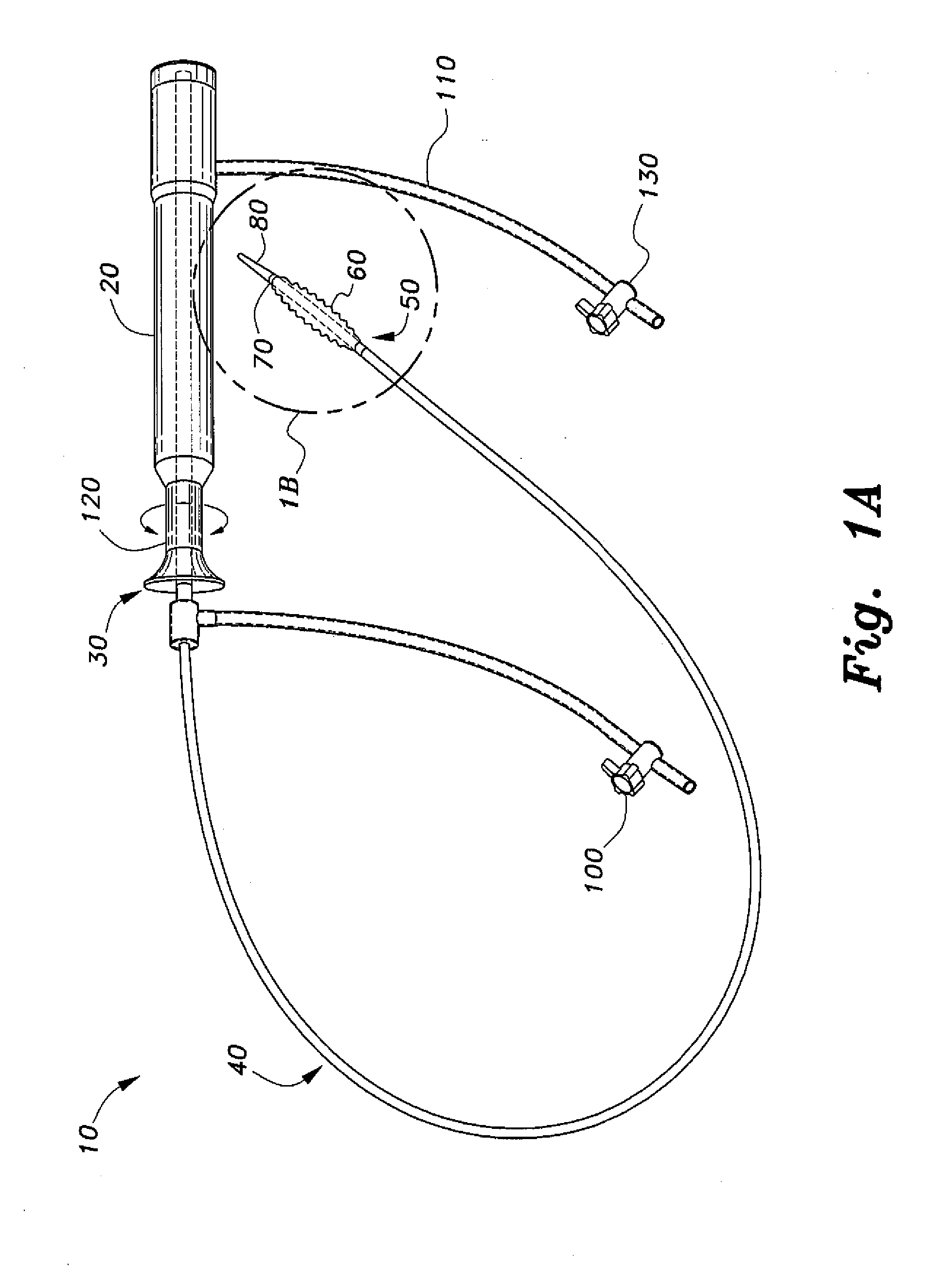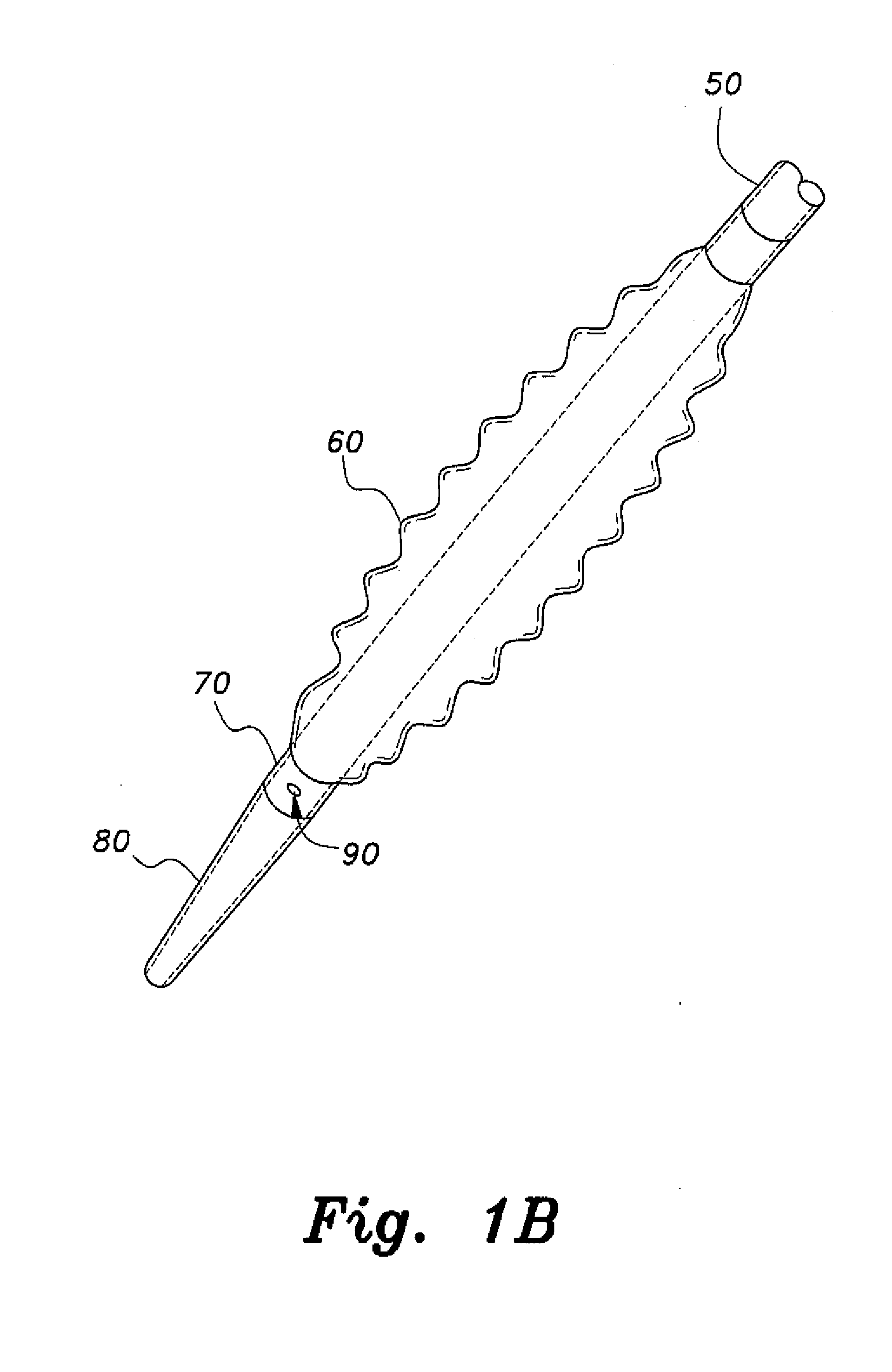Apparatus for closure of atrial septal defects
a technology for atrial septal defects and atrial septal valves, applied in the field of medical devices, can solve the problems of atrial septal defects, decompression sickness, migraines, decompression sickness, etc., and achieve the effect of reducing the risk of edema
- Summary
- Abstract
- Description
- Claims
- Application Information
AI Technical Summary
Benefits of technology
Problems solved by technology
Method used
Image
Examples
Embodiment Construction
[0021]Referring to FIGS. 1A-5, an apparatus 10 for closure of atrial septal defects is generally illustrated. The apparatus 10 includes a sheath 40 having a proximal portion 30, such as a flexible proximal portion, and a distal portion 50, the sheath 40 defining a lumen extending therethrough, the sheath 40 being configured for receiving a medical implement 300, a balloon 60 positioned on the distal portion 50 of the sheath 40, wherein the balloon 60 is configured for measuring the size of an ASD 220 within an interatrial septum 200 of a patient, and a handle 20 configured for positioning and aligning the balloon 60 and the medical implement 300 within the ASD 220, the handle 20 being positioned in communicating relation with the proximal portion 30 of the sheath 40.
[0022]The sheath 40 can be adapted for placement within the ASD 220 in the interatrial septum 200 of the patient. The sheath 40 can include a wall of substantially uniform thickness having an outer surface and an inner s...
PUM
 Login to View More
Login to View More Abstract
Description
Claims
Application Information
 Login to View More
Login to View More - Generate Ideas
- Intellectual Property
- Life Sciences
- Materials
- Tech Scout
- Unparalleled Data Quality
- Higher Quality Content
- 60% Fewer Hallucinations
Browse by: Latest US Patents, China's latest patents, Technical Efficacy Thesaurus, Application Domain, Technology Topic, Popular Technical Reports.
© 2025 PatSnap. All rights reserved.Legal|Privacy policy|Modern Slavery Act Transparency Statement|Sitemap|About US| Contact US: help@patsnap.com



